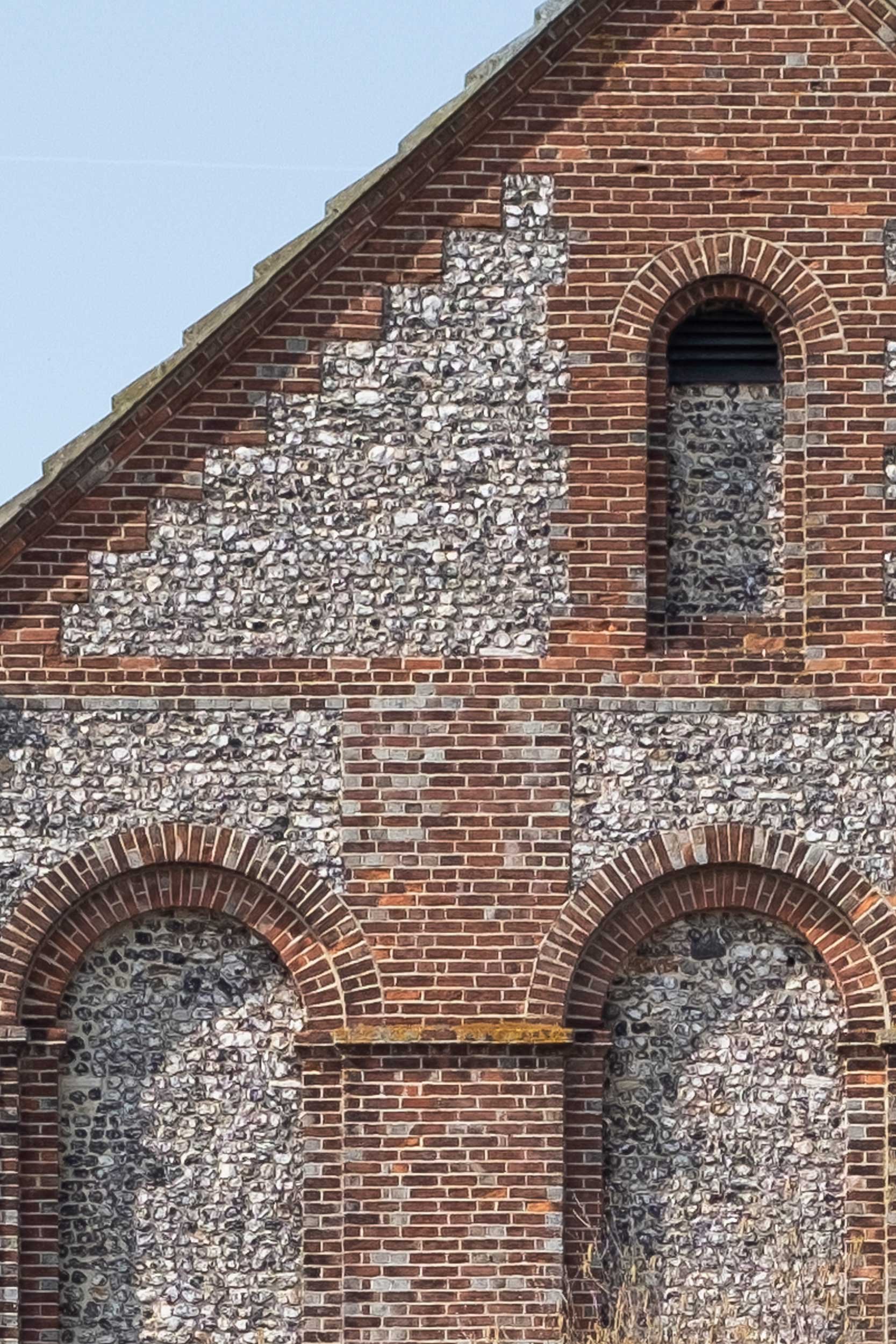Architecture of Brick
The first bricks were sun dried blocks of mud, created around 7000BC in Mesopotamia and used as a means of shelter from the environment. The Romans later refined them by firing the clay in a kiln for strength and durability, providing more resistance to harsh weather conditions. During the eleventh century bricks were introduced to Europe.
The brick gothic period can be categorized by the lack of figural architectural sculptures which had previously been carved in stone. The Gothic figures were impossible to create out of bulky bricks at that time, but could be identified by the use of split courses of bricks in varying colours (red bricks, glazed bricks) and white lime plaster. Eventually, specially shaped bricks were introduced which would imitate the architectural sculptures. During the Baroque and Romanesque periods, brick buildings were generally unpopular and brickwork was generally plastered over. Only later in the eighteenth century did brickwork become more popular again.
The colour and texture of a brick is the result of the mix of clay from which it is made, sometimes with the addition of other materials, and of the manner in which it has been fired - primarily the temperature, length and regularity of the firing process.
A brick's open cell structure makes them windproof yet breathable, which means they are an ideal material for homes. They offer insulation, helping interiors remain cool during hot summers and warm in cold winters. Heat is generally stored in the brick during the day and released when external temperatures fall.
Bricks can be manufactured in several ways. Extruded bricks are made by being forced through an opening in a steel ‘die’, with a very consistent size and shape. Wire-cut bricks are cut to size after extrusion with a tensioned wire, which may leave drag marks. Moulded bricks, as the name suggests, are shaped in moulds rather than being extruded. Machine-moulded bricks involve clay being forced into moulds using pressure, whereas handmade bricks are forced into moulds by a person. Finally, dry-pressed bricks start with a much thicker clay mix and are compressed with great force.
Metric sized bricks are most commonly used, however specifying a variety of sizes and colours can add interest and a level of detail to a project. Bricks such as long format bricks, specials, and brick slips (which have a reduced depth profile) can be specified to suit particular details.
Mortar is important to consider; specifically the ratio between contrasting parts, usually water, sand, cement or lime. Variables include setting time, strength, durability, permeability and breathability. The mortar is then pointed and can be concave, raked, flush or extruded, amongst others. Inclume often specify an additive to change the colour, sometimes to match the brick. Varying the colour of the mortar makes a considerable difference to the appearance of the brickwork as a whole. Lime mortar is often used in historic building conservation for its breathability.
Architects specify brickwork for both external and internal conditions. It is becoming more common practice to expose brickwork internally, often providing a contemporary and raw texture that forms a continuation of the external material. The brickwork can take many patterns and bonds, which form interest and character to an otherwise blank canvas.
Before the brickwork is constructed it is important to get a sample panel prepared by the bricklayer which demonstrates how the bricks and the mortar will appear on the final building. There are many variables to the outcome, such as batch quality, blemishes, and hand picked colours, and it is important to ensure these variables are agreed before the brickwork is constructed.





